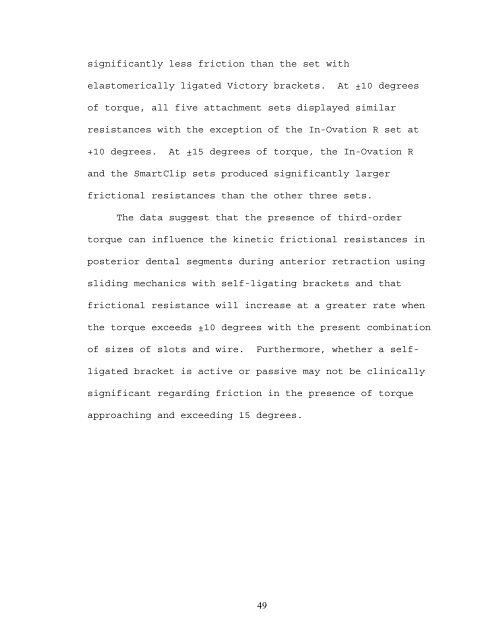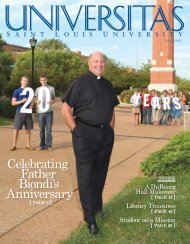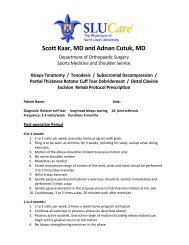The effects of third-order torque and self - Saint Louis University
The effects of third-order torque and self - Saint Louis University
The effects of third-order torque and self - Saint Louis University
You also want an ePaper? Increase the reach of your titles
YUMPU automatically turns print PDFs into web optimized ePapers that Google loves.
significantly less friction than the set with<br />
elastomerically ligated Victory brackets. At ±10 degrees<br />
<strong>of</strong> <strong>torque</strong>, all five attachment sets displayed similar<br />
resistances with the exception <strong>of</strong> the In-Ovation R set at<br />
+10 degrees. At ±15 degrees <strong>of</strong> <strong>torque</strong>, the In-Ovation R<br />
<strong>and</strong> the SmartClip sets produced significantly larger<br />
frictional resistances than the other three sets.<br />
<strong>The</strong> data suggest that the presence <strong>of</strong> <strong>third</strong>-<strong>order</strong><br />
<strong>torque</strong> can influence the kinetic frictional resistances in<br />
posterior dental segments during anterior retraction using<br />
sliding mechanics with <strong>self</strong>-ligating brackets <strong>and</strong> that<br />
frictional resistance will increase at a greater rate when<br />
the <strong>torque</strong> exceeds ±10 degrees with the present combination<br />
<strong>of</strong> sizes <strong>of</strong> slots <strong>and</strong> wire. Furthermore, whether a <strong>self</strong>-<br />
ligated bracket is active or passive may not be clinically<br />
significant regarding friction in the presence <strong>of</strong> <strong>torque</strong><br />
approaching <strong>and</strong> exceeding 15 degrees.<br />
49
















